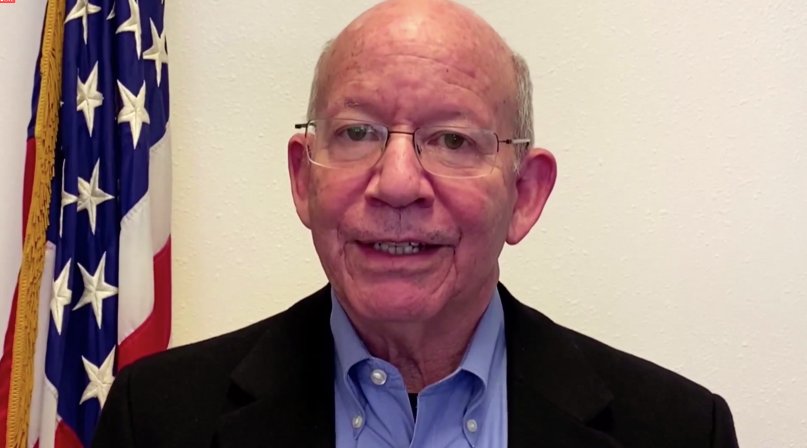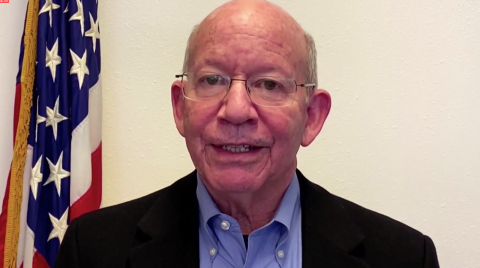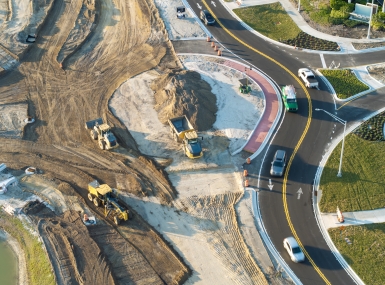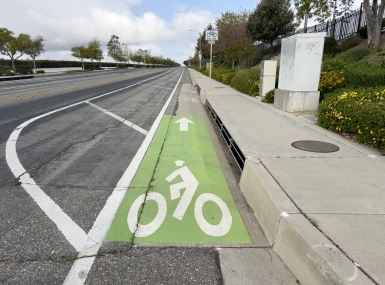Infrastructure bill will grow from bipartisan support for FAST Act reauthorization

Key Takeaways
If bipartisanship is to be found in the 117th Congress, the route to reach it will follow roads and cross bridges. Where it goes from there remains to be seen.
Though a surface transportation reauthorization bill is the only must-do legislation by Sept. 30, members of both parties and both chambers of Congress expressed hopes during a March 25 briefing to NACo members that an infrastructure bill would continue to foster common ideological ground.
Leaders of the Senate Environment and Public Works Committee pointed to the FAST Act reauthorization that passed unanimously in the last Congress as a starting point. They hope to have a bill out of their committee by May. House counterparts are aiming for early summer.
Learn More
Sen. Tom Carper (D-Del.), chair of the committee, stressed that bipartisan viability was one of the best qualities the bill could offer.
“One that can get across the finish line onto the president’s desk,” he said.
His Republican counterpart agreed.
“Obviously, a five-year infrastructure bill, highway bill is not only an enhancement to safety and the ability to move commercial products and other things,” said Sen. Shelley Moore Capito (R-W.Va.), the committee’s ranking member. “It’s also a big job creator, it always has been and so we’re hoping that with the give and take of a bipartisan process like we’ve had in the past, we’ll have good luck to be able to pass this through committee.”
Whatever comity the Environment and Public Works (EPW) Committee enjoys, it would have to extend to the Banking, Finance and Commerce committees.
“Passing a comprehensive reauthorization package in the Senate isn’t something the EPW Committee can do alone, we have three other committees… they’ve got to do their jobs as well,” Carper said.
Rep. Sam Graves (R-Mo.), ranking member of the Transportation and Infrastructure Committee, said Biden and Transportation Secretary Pete Buttigieg seemed receptive to making a good faith effort to take Republican priorities into consideration if surface transportation becomes part of a larger infrastructure package.
“I ask that you all remind members of Congress and the administration that the road to success, when it comes to reauthorization of an infrastructure package for that matter, is through partnership, it’s not through partisanship,” he said.
Rep. Rodney Davis (R-Ill.), ranking member on the Subcommittee on Highways and Transit, warned against using budget reconciliation to pass an entire infrastructure bill.
“If you’re going to use budget reconciliation, use it for the climate package, don’t disguise a climate bill into a title that’s infrastructure,” he said.
The link between transportation and infrastructure and climate change was reflected both in recognition that new construction would have to hold up under different environmental conditions and the infrastructure needed to serve transportation.
Carper noted that nearly 30 percent of greenhouse gases were produced by vehicles, making it a big target for Biden’s goal for addressing climate change. Capito noted that planning for electric vehicle-charging stations was going to be a fundamental part of long-term planning.
House Transportation Chairman Rep. Peter DeFazio (D-Ore.) said adjusting to more extreme environmental conditions was crucial to making sure those infrastructure investments last.
“We’re going to rebuild the bridges, the highways and our transit in a way that is going to be resilient, we’re going to deal with the issues that are the result of climate change — whether you acknowledge it or not — the sea level is rising, we’re having more severe weather events, we’re going to rebuild it in a way that lasts longer,” he said. “I want 100-year bridges, not 60-year bridges.”
Senate Banking, Housing and Urban Affairs Chairman Sen. Sherrod Brown (D-Ohio) pointed out that infrastructure concepts ranged beyond transportation, and when comprehensively planned for, could tackle both affordable housing and traffic congestion.
“We talk about infrastructure, we mean it in the broadest terms, we mean roads and bridges and transit, of course, but infrastructure also means housing, broadband and public education,” he said. “It means research and development in the technologies that support the middle-class jobs of the future.”
“We can also make sure communities are thinking about the links between transportation and housing,” he noted. “So many people want to live near public transit, they just can’t afford it. We can work to help fix that.”
The members recognized the plight counties encounter as part of the federal-state-local system and offered support.
Sen. Ben Cardin (D-Md.), chairman of the Subcommittee on Transportation and Infrastructure, said “transportation alternative” programs could direct funds specifically to local governments.
“We know you’re at the mercy of the states,” he said. “Of course, the state has its priorities, but local governments have their priorities and we want to make sure that you have discretion on funding your priorities.”
“I’m sensitive to the fact that sometimes the state’s interests don’t exactly align with county governments,” DeFazio added.
Capito stressed local flexibility for what comes out of an infrastructure package.
“I think the worst thing that we could do is think that what’s good in West Virginia is good in California or good in Maine,” she said. “Local leaders with state legislators and the governor certainly can make those decisions with their state departments of transportation.”
Speakers also discussed paying for an infrastructure package that has been reported to total $3 trillion.
The user-fee system that has funded infrastructure continues to fall behind pace as new cars need less and less gas, while at the same time the federal gas tax has remained the same since 1993.
Davis said funding sources should be diversified but shouldn’t stray too far from transportation and infrastructure sources.
“I think opening up the income tax to pay for a climate bill or an infrastructure bill would be very short-sighted,” he said, particularly following the pandemic and economic malaise.
Capito suggested a big bill, properly funded, was the best way to keep the country moving forward, rather than just fixing the transportation system, but the key to continued bipartisanship was to “avoid lightning-rod issues.”
“A long-term reauthorization gives flexibility and certainty to have a flow of funds that allows us to do bigger projects,” she said. “I think that’s going to be where you see, in the broader sense, where the bipartisanship may break down, because I think they’re planning to raise all kinds of taxes to pay for this. That’s a red flag for us, and for me.”
Graves stressed that streamlining the permitting processes would help speed projects and limit budget overruns
DeFazio said current bond interest rates were low enough to take a dent out of the costs, but years of neglect have added up for too long.
“We have lived too long off the legacy of Dwight David Eisenhower. What he did to knit the country together was incredible, post-World War II, made us the envy of the world. Now it’s fallen apart,” he said. “Forty percent of the nation’s highway system needs to be rebuilt from the roadbed up. You can’t just slap another layer of asphalt on it.”

Attachments
Related News

NACo sends letters to House Transportation and Infrastructure Committee urging support for county priorities in surface transportation reauthorization
On April 30, NACo submitted three letters to the House Transportation and Infrastructure Committee outlining county priorities as Congress begins work on the next surface transportation reauthorization. The current authorization is set to expire on September 30, 2026, and renewing it is a key priority for the Committee in the 119th Congress.

Congress reintroduces bipartisan legislation for bike and pedestrian safety funding expansion
In March, lawmakers in the House and Senate reintroduced the bipartisan Sarah Debbink Langenkamp Active Transportation Safety Act. The legislation honors Sarah Debbink Langenkamp, a former U.S. diplomat and mother of two who was tragically killed while biking home in Bethesda, Md., just weeks after being evacuated from Ukraine in 2022.

FY 25 Update: USDOT announces $982 million through Safe Streets and Roads for All Grant Program
On February 21, the U.S. Department of Transportation announced the availability of $1.2 billion through the Safe Streets and Roads for All competitive grant program in Fiscal Year 2024 for transportation safety planning or construction projects.
